In and out (just about) of the Wadi Hadramawt – Mabel of Arabia

A recent Aljazeera feature on the mud-castle skyscrapers of the Hadramawt diverts and transports instantaneously. These castles strung along Yemen’s Wadi Hadramawt, bewildering CGI confections all, still miraculously exist – at risk equally from age-old threats of internecine wars, and new ones, such as mud-dissolving floods, initiated by climate change.
But if we want, we can fade to sepia and go back and look at these castles through the eyes of cavalier Victorian travellers of the 1890s:
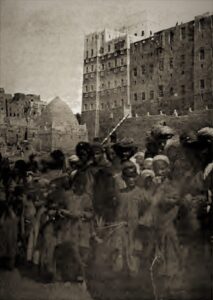
“… the only possible way of making explorations in Arabia is to take it piecemeal… by degrees to make a complete map by patching together the results of a number of isolated expeditions. Indeed, this is the only satisfactory way of seeing any country.” (writes Mabel Bent in 1900)
Hands up then if you’ve heard of Theodore and Mabel Bent (1852-1897 and 1847-1929 respectively)? Ok – a couple of you. Chances are you met them in the Greek Cyclades, right? – over a copy of Bent’s great 1885 guide to the islands (by the way, still the best English introduction to them).
But these Victorians travelled further, much further. For instance? – well, e.g., they were paid by Cecil Rhodes in 1891 to explore the remains of Great Zimbabwe; they also rode, south–north, the length of Iran in 1889; and trekked the Ethiopian highlands in 1893; etc., etc…
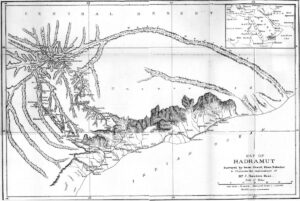
Perhaps, though, their greatest folie à deux comprised the three attempts they made on the Wadi Hadramawt, in the Yemen, ‘Arabia Felix’, between 1894 and 1897. Where? Picture Aden on a map, wiggle your finger east along the coast for a few centimetres, move the same finger inland, northish, for a couple more, and you about have it – in all, 200 km or so of the most spectacular valley-landscape you will ever see.
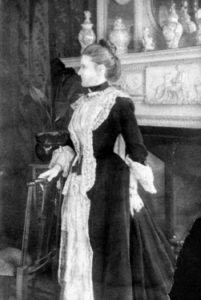
But of course you would be mad to try (check out the UK Foreign Office’s latest advice). Yemen is dangerous – in 1894 as now. In all probability, Mabel Bent, red-haired and no-nonsense, was the first western woman, voluntarily at least, ever to ride from the port of Mokulla up and into the Wadi Hadramawt, with its oases and fabulous cities of mud towers. An extraordinary adventure for an aristocratic Irishwoman, of the trout-brown Slaney River, Co. Wexford. (Theodore’s objectives for the expedition are beyond the scope of these short paragraphs, but they had something to do with the Queen of Sheba. Suffice it to say… his last trip killed him – Mabel got him home alive, somehow, in May 1897, to their house near London’s Marble Arch, where he shivered to death a few days later of malarial complications. He was 45, his wife was 50.)
Mabel’s diaries (she called them her ‘Chronicles’) have all been published (except for a missing volume – her trip to Ethiopia in early 1893). Here she is on her way east, to ‘the castle of the Sultan of Shibahm at Al Koton’ (al-Qatn); she took the photo you see here too.

Friday, 12th January 1894: “[Theodore and I] still proceed among limestone cliffs along the wadis … Our journey was seven hours, always along the valley, more like a plain it was so wide. We intended to go on to Al Khatan, where the Sultan of Shibahm lives, but a messenger came saying he expected to see us tomorrow and we were to encamp at Al Furuth. So when we reached that place, where there is a very beautiful well, shaded by palms and with four oxen, two at each side, drawing up water, we set up our five tents in the smoothest part of a ploughed field. Towards evening came two viziers, gaily dressed on fine horses, to welcome us: Salem bin Ali and Salem bin Abdullah, cousins.
“[The viziers came to greet us] about 7.30 next morning. We had all stayed in bed till it was quite light and they brought two extra horses… While the camels were loaded a lot of women came to see me and I sat in a chair and took off my gloves at their request and let them hand my hands round. They asked to see my head, so then they got my hair down, dived their fingers down my collar, tried to open the front of my dress and take my boots off and turned up my gaiters…
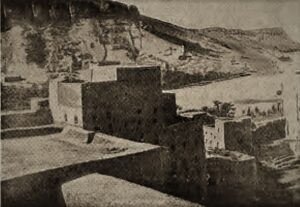
“We principal personages set out, leaving camels, etc., to follow… in ½ hour we arrived and were delighted with the appearance of this town of towers in the morning light, and the tallest, whitest and most decorated, shining against the precipitous mountains, was pointed out as our future home, and we all wondered what should next befall us and whether this was the farthest point of our journey or if we could get onward…” [The Travel Chronicles of Mabel Bent, Vol 3, Arabia, p.165 ff]
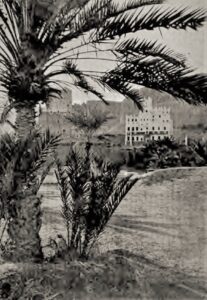
A few years later, after Theodore’s death, Mabel writes up the same event in her tribute book to her husband – Southern Arabia: “Like a fairy palace of the Arabian Nights, white as a wedding cake, and with as many battlements and pinnacles, with its windows painted red, the colour being made from red sandstone, and its balustrades decorated with the inevitable chevron pattern, the castle of Al Koton rears its battlemented towers above the neighbouring brown houses and expanse of palm groves; behind it rise the steep red rocks of the encircling mountains, the whole forming a scene of Oriental beauty difficult to describe in words. This lovely building, shining in the morning light against the dark precipitous mountains, was pointed out to us as our future abode.” (Southern Arabia, 1900, p. 111)

There we have it then, not Ludwig of Bavaria, but Mabel of Arabia, and the fantasy castles she wondered at some 130 years ago, and still, miraculously, standing.
Available from Archaeopress and other sources.
Coda: “This war has to end” said President Biden the other day (Feb 2021), and “we’re ending all American support for offensive operations in the war in Yemen”. What will this mean and how can it end? Theodore and Mabel Bent were travelling in this extraordinary region in the 1890s, as a recent post in writer Jen Barclay’s blog outlines…
 Leave a comment or contact us about this article
Leave a comment or contact us about this article